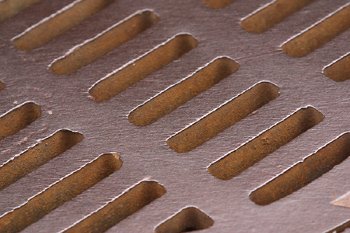To prevent the city from wallowing in its own filth, a team of
engineers and sewer experts will get down and dirty this winter to
inspect 45 miles of sewer lines for corrosion. Acids in the sewage
have eaten inches off of some pipes, creating health and safety
concerns.
Gilroy – To prevent the city from wallowing in its own filth, a team of engineers and sewer experts will get down and dirty this winter to inspect 45 miles of sewer lines for corrosion. Acids in the sewage have eaten inches off of some pipes, creating health and safety concerns.
“I took a sneak look and found out that some pipelines are in grave conditions,” said Senior Civil Engineer Saeid Vaziry, referring to the “structurally unsound” portions of concrete pipelines he gauged eight months ago near the sewer treatment plant just south of town.
“I went, ‘Wait a minute. What do the rest of the pipes look like? Let’s take a better look at this,’ ” said Vaziry, a city employee who works for the South County Wastewater Regional Authority, adding that he was also concerned about the eight-mile channel that runs between Gilroy and Morgan Hill and could “wipe out half the city’s sewer services if it collapses.”
“We have an old, aging system that’s falling apart,” Vaziry said of the mostly concrete sewer infrastructure, parts of which are struggling after 100 years in commission. “If we don’t do anything about it, we will have to do emergency repairs that are $2,000 to $3,000 dollars a foot.”
Vaziry is spearheading the estimated $455,000 “condition assessment” of Gilroy’s 45 miles of sewer lines with inside diameters of 10 inches or larger. He used to work in Fresno and created a similar program there that identified serious shortfalls in the city’s pipeline that cost $67 million to fix over 10 years.
“It’s the same program here, but on a much smaller scale,” Vaziry said.
Depending on the extent of problems, Gilroy will split a portion of the $455,000 cost – which depends on materials and exact hours worked – with Morgan Hill since the two cities share sewer capacity.
“The assessment will tell us exactly what we have and what the costs will be,” Vaziry said, referring to any post-appraisal repair costs that he said could exceed $1 million, but “80 to 90 percent of the city’s pipes could be fine. We won’t know unless we take a look.”
The city solicited 110 consulting firms for the appraisal job and have settled on Blair, Church & Flynn, a company that specializes in sewer maintenance.
The contracted workers will team up with city employees to evaluate the city’s entire subterranean system and then rank potential projects based on need, with priority going to any pipelines that could cave in and cause sink holes like the one on Rossi Lane that occurred last year, Vaziry said.
“They will recommend rehabilitation projects, and those will be evaluated on an as-need basis.” Vaziry said. “If it’s a bigger issue, we’ll mark it as a longer-term capital improvement project.”
The city’s trying to be proactive by looking at every foot of pipe, Vaziry noted, and in order to do that, “we have to hire experts.”
The city is still negotiating with Blair, Church & Flynn, but Vaziry said he expects an agreement in the next couple of months, and then it’s just a matter of workers canvassing the city for manholes and then cleaning the pipes for cameras that will probe them over a six month period.
The entire effort is part of a three- to five-year rehabilitation program and is by far the “most sophisticated and high-tech” effort to date, City Administrator Jay Baksa said.
“In the old days we used to put smoke in the pipelines and see where there were any leaks or illegal connections,” Baksa said, referring to the city’s only other in-depth, full-scale inspections that occurred in the mid-1980s and early ’90s.
A decade earlier, Congress passed the 1977 Clean Water Act, which Vaziry said has ironically contributed to the problem since it banned industrial businesses from adding heavy metals to their sewage output. With no heavy metals to corrode, the fecal bacteria turned on the pipes.
“The bacteria attacked metals in the sewage, but now it’s attacking the concrete,” Vaziry said, referring to the standard concrete and clay pipes that lack reinforcement and can last from 50 to 90 years depending on the environment.
“Some of the city’s lines are as old as 100 years old,” Baksa said, “so this is all just part of the process.”
Modern concrete pipes have thick, bacteria-resistant plastic lining, Vaziry said, and they will replace any older ones that “look perfect from the outside, but sulfuric acid has eaten away at their insides like a cancer.” This is what happened to the “inches missing” from the pipe Vaziry inspected near the plant eight months ago.
City Engineer Gerry Dutra said the city also hopes to finalize a nearly $400,000 contract with Fermin Sierra Construction to remove and replace 2,000 feet of smaller clay pipes with thick plastic ones in three locations: the alley between Hanna and Rosanna streets from Seventh to Ninth streets; the alley between Santa Teresa Boulevard and Filice Drive from Third to Fourth streets; and the backyard of a home on Santa Teresa Boulevard with pipes that predate the modern ones running under roads.
Residents will receive notifications before work begins in September, and Dutra said they’ll be asked to reduce water usage, though services will not be disrupted because detour pipes will handle sewage while workers install the new plastic pipes.















